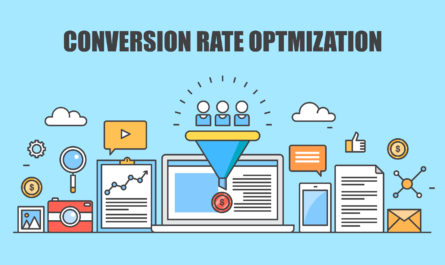A lot of people may be running their subscription box awhile and they are now wondering when will they start making some money?
Or you might be a brand new subscription box entrepreneur and you are trying to forecast when will you be able to leave your job and start earning a full-time income from your subscription box?
Well, the answer to both of them questions is the exact same thing. You will start seeing a profit when you pass the break-even point in your business.
In BusterBox myself and the two other founders became completely obsessed with our break-even point from very early on in the business. We wanted to know exactly how many subscribers, we needed and what our monthly revenue had to be to have a healthy business where we could get paid, pay our staff and have enough money to keep growing.
I think this is very important and every subscription box business should spend some time working this out. Only then will you know what the goal is and you will be able to calculate the amount of time and money it will take to get there.
So what is the definition of a break-even point in a business?
The break-even point determines the amount of sales needed to achieve a net income of zero. It shows the point when a company’s revenue equals total fixed costs plus variable costs, and its fixed costs equal the contribution margin.
The above statement is pulled directly from google and is 100% correct. Once you surpass the breakeven point you will start earning profit in your business.
So what is the quickest way to work out your break-even point?
The first thing you need to work out is what is your gross margin. This is how much money is left over after paying all variable expenses. E.G How much money do you make on each box sold after you fill it, package it and ship it out to the customer.
The next thing you should do is write down a list of all the fixed costs in your business. Your fixed costs are things which are essential to running your business and you know the cost won’t change as you scale.
Here’s an example of some of your fixed costs· Software· Insurance· Warehouse Rent· Loan repayments· Annual Staff Salaries
Go through your bank statements very carefully and make sure you have everything listed.
This is a good opportunity to gut what isn’t 100% needed. Now add up the exact amount you spend on your fixed costs each month and write this figure down.
You now need to work out your variable costs and see roughly what you will be spending on them each month.
Here’s an example of some of your variable costs· Software (With transaction fees)· Credit card fees· Staff Salaries paid by the hour.
Now do the same thing again and go through these expenses carefully and work out exactly how much they cost on a monthly basis. Once you have done that add up your fixed and variable costs and see exactly how much they cost per month.
Now you may think that it is but because we are running a subscription box business, we have some other stuff we have to account for. The next bit of information is vital and is where a lot of subscription boxes, struggle so they never go profitable. There are some key metrics that you must understand and monitor to truly understand what your break-even point is and them metrics are the following.
CPA (Cost per Acquisition)·
Monthly Churn %·
MRR – Monthly Recurring revenue·
ARPA – Average revenue per account·
Customer Lifetime value
CPA (Cost Per Acquisition)
So let’s start with the CPA. This is the cost per acquisition. The easiest way to work this out is to calculate your total marketing budget for the entire month and divide it by how many new customers signed up. Say your marketing budget was $5000 for the month and you signed up 400 new customers that means your CPA is $12.50.
Monthly Churn.
This is one of the most important metrics for any subscription business in general. If you have a high churn rate you need to spend more on marketing to replace your customers every month and keep growing. For some subscription businesses with a high churn rate, this is completely unsustainable as they get bigger. This is one of the main reasons why you hear about some of the bigger boxes getting into financial trouble and not being able to turn a profit despite millions in revenue. You need some dedicated software to work this out accurately, but for the purpose of this exercise say you have 3000 subscribers and you lose 300 each month. That means your monthly churn rate is 10%.
MRR – Monthly Recurring Revenue
This is the amount of monthly revenue your company generates. E.G you have 3000 Subscribers paying you $30 per month. This means your MRR is $90000.
ARPA (Average Revenue Per Account)
This is how you measure on average how much revenue each customer brings in for you. This is especially handy if you offer multiple subscriptions with different pricing tiers Average revenue per account allows for the analysis of a company’s revenue generation and growth at the per-unit level, which can help identify which products are high or low revenue-generators. Once you understand what your ARPA is you will be able to work out how much profit you make from each subscription. The quickest way to work this out would be the following calculation ARPA = MRR / Total number of customers.
Customer Lifetime Value
This is a very important metric as it tells you how profitable your company will be in the long term. This metric lets you know how much each customer is worth to you over the duration of their stay with you and how much you can spend on acquiring a new customer. You should always be striving to improve this. You need a dedicated software to analyse this in real-time, but here is a quick way to work it out.
Say each customer pays you $30 per month and your monthly churn is 10%. This means you are keeping people for 10 months on average.
$30 X 10 = $300
So on average, each customer brings you in $300 in revenue over the lifetime of their subscription. That isn’t profit though that is only revenue. So now you need to work out what your gross profit is.
Say you make $10 profit per box on average.
$10 x 10 – $100
Case Study.
Now let’s come up with a Fake subscription box and do a case study on it to see what their break-even point is. Basketball Box is a monthly delivery of Basketball Goodies straight to your door every month.
Fixed Costs
Including Annual Salaries and everything mentioned above, this comes up to $12000 per month.
Variable Costs
These are currently costing about $2000 per month but are liable to rise once the company grows.
Metrics
Basketball box is $30 per month and they make $10 gross profit per box.
Their monthly churn rate is 10%They make $100 gross profit throughout the lifetime value of the subscription. It costs them $12.50 to get a new customer signed up
Summery
Not including marketing spend they need to be making $14000 profit per month to keep the lights on. This works out at 1400 subscribers. If they don’t spend any money on marketing though the business will collapse so that really isn’t an option they need to be replacing their customers at a minimum each month.
So at 1400 subscribers with 10% churn, they need to replace 140 customers each month. This means they need to find 140 new customers per month. We worked out their CPA is $12.50 so multiply that by 140 and you get $1750 spent on marketing per month.
This means in total they need roughly $15750 in gross profit each month to break even. This equals 1575 active subscribers.
Now, this is a very rough example and it can get a lot more complicated.
These numbers were made up out of thin air. If you do this calculation again and increase the churn by 5% and the CPA by $5 it will make a massive difference to the break-even point. I also kept it simple and never mentioned anything about future growth.
The dream for all subscription box company’s is hit the break-even point and then be able to fund future growth themselves through their revenues.
I also never mentioned anything about taxes or how other costs can come into the picture or a number of other factors including Cashflow. I hope this article gives you a clear idea though of what you need to be doing to work out the break-even point in your business so you can start earning some real money.
I also never mentioned selling any other products on the back end, which is absolutely essential and will help you earn more money on each customer. If you have any questions about break-even points or subscription boxes in general, please let me know and I would be delighted to answer them.



